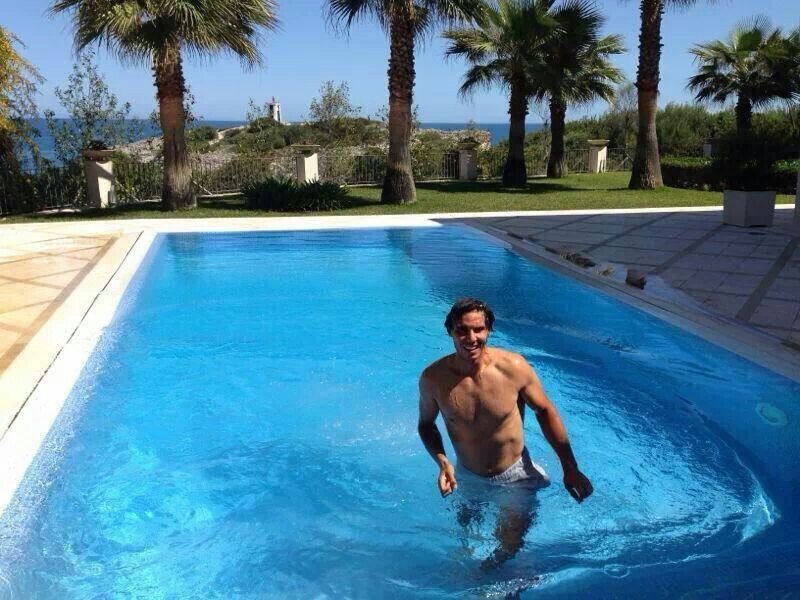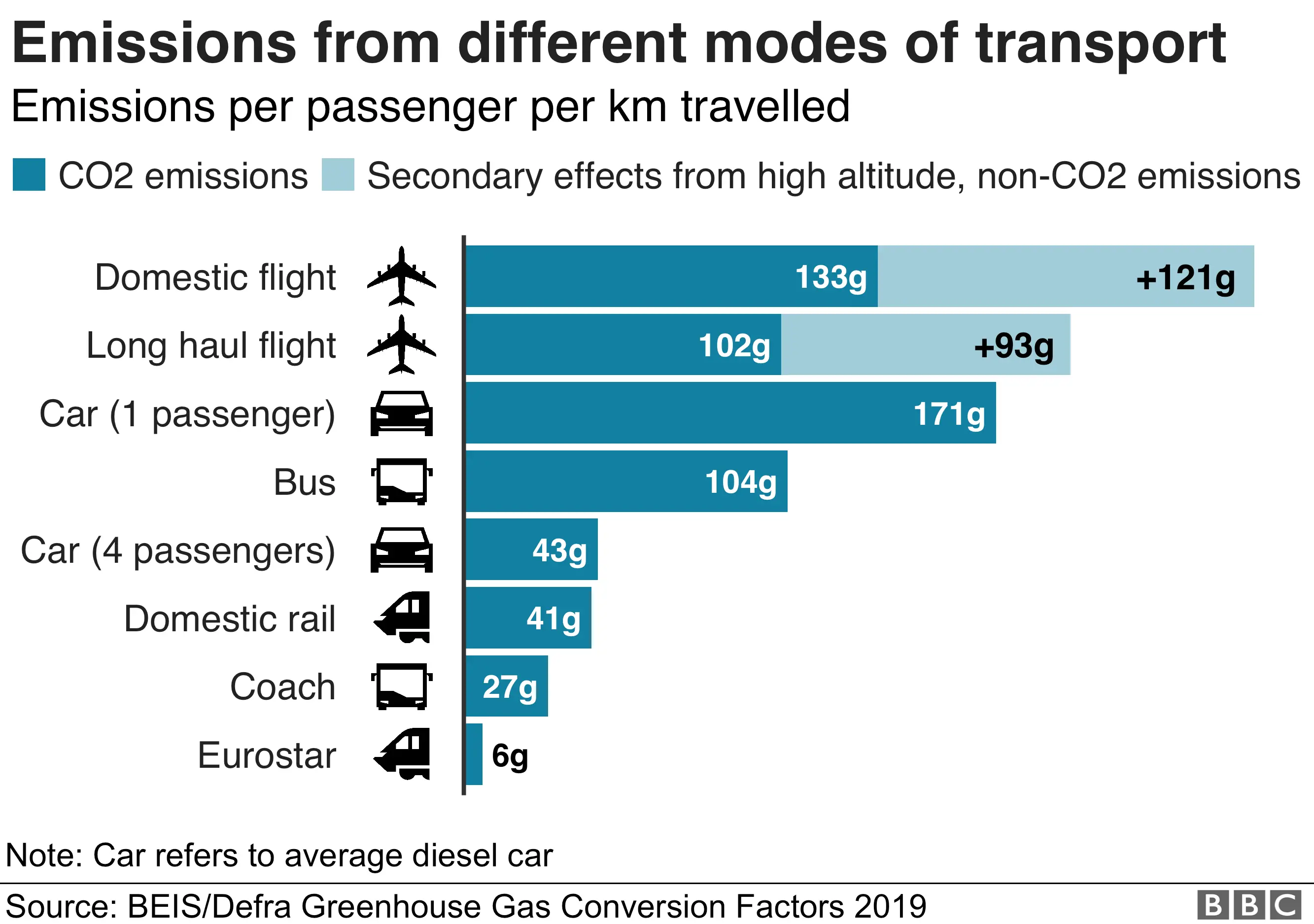Rafael Nadal, one of the most celebrated tennis players in history, is known for his relentless energy on the court and his philanthropic efforts off it. However, as global awareness of environmental issues grows, questions arise about the carbon footprint of elite athletes like Nadal. From frequent international travel to energy-intensive tournaments and sponsorships, the lifestyle of a top-tier athlete can have a significant environmental impact. This article delves into the various factors contributing to Nadal's carbon footprint, exploring his travel habits, tournament schedules, and personal initiatives to mitigate his environmental impact. By examining these elements, we aim to provide a comprehensive understanding of the ecological footprint of a modern sports icon.
https://youtube.com/watch?v=yJXWav0kl1Q
- What Is the Carbon Footprint of Rafael Nadal?
- 1. How Does Rafael Nadal's Travel Impact His Carbon Footprint?
- 2. What Role Do Tennis Tournaments Play in Nadal's Carbon Footprint?
- 3. How Does Nadal's Training Routine Affect the Environment?
- 4. What Are Rafael Nadal's Efforts to Reduce His Carbon Footprint?
- 5. How Does Nadal's Lifestyle Contribute to His Carbon Footprint?
- How many homes does Rafael Nadal own?
- What does Rafa Nadal eat in a day?
- What is the carbon footprint of flying 1000 miles?
- What Factors Influence the Carbon Footprint of Flying 1000 Miles?
- How Much CO2 is Emitted per Passenger on a 1000-Mile Flight?
- How Does Flying Compare to Other Modes of Transportation for 1000 Miles?
- What Are the Environmental Impacts Beyond CO2 Emissions?
- How Can Passengers Reduce Their Carbon Footprint When Flying 1000 Miles?
- What was Rafael Nadal's famous quote?
- Frequently Asked Questions (FAQ)
What Is the Carbon Footprint of Rafael Nadal?
Rafael Nadal, one of the most celebrated tennis players in history, has a significant carbon footprint due to his extensive travel, tournaments, and lifestyle. As a global athlete, his career involves frequent international flights, energy-intensive training facilities, and participation in events that require substantial resources. Understanding his carbon footprint helps shed light on the environmental impact of professional sports and the steps that can be taken to mitigate it.
See Also What Is the Carbon Footprint of Naomi Osaka?
What Is the Carbon Footprint of Naomi Osaka?1. How Does Rafael Nadal's Travel Impact His Carbon Footprint?
Rafael Nadal's career requires him to travel extensively across the globe to participate in tournaments. This constant movement, primarily via air travel, contributes significantly to his carbon footprint. For instance, a single round-trip flight from Spain to Australia emits approximately 5.6 metric tons of CO2. Over a year, these flights accumulate, making travel one of the largest contributors to his environmental impact.
| Activity | Estimated CO2 Emissions (per year) |
|---|---|
| International Flights | ~150 metric tons |
| Domestic Flights | ~50 metric tons |
| Ground Transportation | ~10 metric tons |
2. What Role Do Tennis Tournaments Play in Nadal's Carbon Footprint?
Tennis tournaments, especially Grand Slam events, require significant energy and resources. Stadiums with large capacities, lighting, and air conditioning systems consume vast amounts of electricity. Additionally, the logistics of organizing these events, including transportation for players, staff, and spectators, further increase the carbon footprint. Nadal's participation in these events indirectly contributes to their overall environmental impact.
3. How Does Nadal's Training Routine Affect the Environment?
Nadal's rigorous training routine involves the use of energy-intensive facilities, such as indoor courts with climate control systems. These facilities often rely on non-renewable energy sources, increasing his carbon footprint. Moreover, the production and maintenance of tennis equipment, like rackets and balls, also have environmental implications due to the materials and processes involved.
See Also What Is Charli D’Amelio’s Carbon Footprint? A Closer Look
What Is Charli D’Amelio’s Carbon Footprint? A Closer Look4. What Are Rafael Nadal's Efforts to Reduce His Carbon Footprint?
Rafael Nadal has shown awareness of environmental issues and has taken steps to reduce his carbon footprint. He has invested in renewable energy projects, such as solar power, and advocates for sustainable practices in sports. Additionally, he supports initiatives aimed at reducing plastic waste and promoting environmental conservation.
5. How Does Nadal's Lifestyle Contribute to His Carbon Footprint?
Beyond his professional activities, Nadal's lifestyle, including his residences and personal travel, also contributes to his carbon footprint. Large homes with energy-intensive systems, private transportation, and luxury amenities all play a role. However, Nadal has made efforts to incorporate sustainable practices into his personal life, such as using energy-efficient appliances and supporting eco-friendly brands.
| Aspect | Estimated CO2 Emissions (per year) |
|---|---|
| Residential Energy Use | ~20 metric tons |
| Private Transportation | ~15 metric tons |
| Luxury Amenities | ~10 metric tons |
How many homes does Rafael Nadal own?

 What Is Khaby Lame's Carbon Footprint? Exploring the Environmental Impact
What Is Khaby Lame's Carbon Footprint? Exploring the Environmental ImpactRafael Nadal's Primary Residence in Mallorca
Rafael Nadal owns a luxurious primary residence in his hometown of Manacor, Mallorca. This property is a sprawling estate that reflects his deep connection to his roots. Key features of this home include:
- A state-of-the-art tennis court for personal training.
- A private gym equipped with the latest fitness technology.
- Expansive gardens and outdoor spaces for relaxation.
Rafael Nadal's Luxury Apartment in Madrid
In addition to his Mallorca home, Nadal owns a luxury apartment in Madrid, which serves as a convenient base during tournaments and business engagements. This property is known for its:
- Modern design and high-end finishes.
- Proximity to key locations like the Mutua Madrid Open venue.
- Stunning views of the city skyline.
Rafael Nadal's Vacation Home in the Dominican Republic
Nadal also owns a vacation home in the Dominican Republic, where he enjoys time off with his family. This property is part of a luxury resort and features:
- Direct access to pristine beaches.
- A private pool and outdoor entertainment areas.
- Exclusive amenities within the resort community.
Rafael Nadal's Property Investments in Spain
Beyond his personal residences, Nadal has invested in several properties across Spain, including:
- A luxury villa in Barcelona for short stays.
- Commercial real estate in Manacor, supporting local businesses.
- Land investments for future development projects.
Rafael Nadal's Real Estate Portfolio Overview
Rafael Nadal's real estate portfolio is diverse, reflecting his success both on and off the court. His properties are strategically located and include:
- Primary residences in Mallorca and Madrid.
- Vacation homes in exotic locations like the Dominican Republic.
- Investment properties that contribute to his financial stability.
What does Rafa Nadal eat in a day?
Rafa Nadal's Daily Breakfast Routine
Rafa Nadal starts his day with a nutrient-rich breakfast to fuel his intense training sessions. His typical breakfast includes:
- Whole grain bread or toast with olive oil and tomato.
- Fresh fruit, such as bananas or oranges, for natural sugars and vitamins.
- Eggs, often scrambled or boiled, for protein.
- Greek yogurt with honey or nuts for added energy and probiotics.
- Green tea or coffee to kickstart his metabolism.
Mid-Morning Snacks for Sustained Energy
To maintain his energy levels, Rafa Nadal incorporates healthy snacks into his mid-morning routine. These snacks often include:
- Nuts and seeds, such as almonds or walnuts, for healthy fats.
- Protein bars or shakes to support muscle recovery.
- Fresh fruit, like apples or berries, for quick energy.
- Dark chocolate in moderation for a treat and antioxidants.
Rafa Nadal's Lunch: A Balanced Meal
Lunch is a balanced meal for Rafa Nadal, focusing on lean proteins, complex carbs, and vegetables. His typical lunch consists of:
- Grilled chicken or fish as the primary protein source.
- Quinoa or brown rice for complex carbohydrates.
- Steamed or roasted vegetables, such as broccoli or spinach, for vitamins and fiber.
- Olive oil drizzled over the meal for healthy fats.
Afternoon Snacks to Refuel
In the afternoon, Rafa Nadal opts for snacks that help him refuel and recover after training. These snacks include:
- Smoothies made with fruits, vegetables, and protein powder.
- Avocado toast for healthy fats and carbs.
- Rice cakes with almond butter for a quick energy boost.
- Hydrating drinks, such as coconut water, to replenish electrolytes.
Dinner: Light and Nutrient-Dense
Rafa Nadal's dinner is designed to be light yet nutrient-dense, aiding in recovery and preparation for the next day. His dinner typically includes:
- Lean proteins, such as turkey or salmon, for muscle repair.
- Sweet potatoes or whole grain pasta for sustained energy.
- Leafy greens, like kale or arugula, for essential nutrients.
- Herbal teas to promote relaxation and digestion.
What is the carbon footprint of flying 1000 miles?

What Factors Influence the Carbon Footprint of Flying 1000 Miles?
The carbon footprint of flying 1000 miles depends on several factors, including:
- Aircraft type: Newer, more fuel-efficient planes emit less CO2 per mile compared to older models.
- Flight load: A fully occupied flight spreads emissions across more passengers, reducing the per-person carbon footprint.
- Flight altitude and speed: Higher altitudes and optimal speeds can improve fuel efficiency, lowering emissions.
- Distance and route: Direct flights are generally more efficient than those with layovers, as takeoffs and landings consume more fuel.
- Class of travel: First and business classes occupy more space, leading to a higher individual carbon footprint compared to economy class.
How Much CO2 is Emitted per Passenger on a 1000-Mile Flight?
On average, a passenger flying 1000 miles emits approximately 0.2 to 0.3 metric tons of CO2. This estimate varies based on:
- Fuel efficiency: Modern aircraft emit around 90-100 grams of CO2 per passenger-kilometer.
- Seat occupancy: A flight with 80% occupancy will have a higher per-passenger emission than one with 100% occupancy.
- Class of travel: Economy class passengers typically account for less CO2 per mile than those in premium classes.
How Does Flying Compare to Other Modes of Transportation for 1000 Miles?
Flying is generally less environmentally friendly than other modes of transportation for the same distance. For example:
- Driving: A car emits about 0.4 metric tons of CO2 for 1000 miles, but this can vary based on fuel type and vehicle efficiency.
- Train travel: Trains emit significantly less CO2, often around 0.05 metric tons per passenger for the same distance.
- Bus travel: Buses are also more efficient, emitting approximately 0.1 metric tons of CO2 per passenger for 1000 miles.
What Are the Environmental Impacts Beyond CO2 Emissions?
In addition to CO2, flying 1000 miles contributes to other environmental impacts, such as:
- Nitrogen oxides (NOx): These emissions contribute to air pollution and the formation of ozone at high altitudes.
- Contrails: The condensation trails left by planes can trap heat in the atmosphere, exacerbating global warming.
- Noise pollution: Airports and flight paths can disrupt local ecosystems and communities.
How Can Passengers Reduce Their Carbon Footprint When Flying 1000 Miles?
Passengers can take several steps to minimize their carbon footprint when flying:
- Choose direct flights: Avoiding layovers reduces fuel consumption and emissions.
- Fly economy class: This maximizes the number of passengers per flight, lowering individual emissions.
- Offset carbon emissions: Many airlines offer programs to invest in renewable energy or reforestation projects.
- Pack light: Reducing luggage weight decreases fuel consumption.
- Select fuel-efficient airlines: Some carriers prioritize newer, more efficient aircraft.
What was Rafael Nadal's famous quote?

Rafael Nadal's famous quote is: You have to fight to reach your dream. You have to sacrifice and work hard for it. This statement reflects his relentless work ethic, determination, and commitment to achieving greatness in tennis and life.
The Meaning Behind Rafael Nadal's Famous Quote
Rafael Nadal's quote emphasizes the importance of perseverance and dedication. It highlights the following key points:
- Fighting for your dreams: Success requires relentless effort and overcoming challenges.
- Sacrifice: Achieving greatness often means giving up comfort and making tough choices.
- Hard work: Consistent effort and discipline are essential to reach your goals.
How Rafael Nadal Embodies His Own Quote
Nadal's career is a testament to his famous quote. Here’s how he lives by these principles:
- Training regimen: Known for his grueling practice sessions, Nadal pushes his limits daily.
- Mental toughness: He has overcome numerous injuries and setbacks, showcasing his resilience.
- Competitive spirit: Nadal’s never-give-up attitude on the court reflects his belief in fighting for success.
The Impact of Rafael Nadal's Quote on Fans
Nadal’s words have inspired millions worldwide. Here’s why his quote resonates with so many:
- Relatability: The message applies to all areas of life, not just sports.
- Motivation: It encourages people to stay focused and work hard despite obstacles.
- Authenticity: Nadal’s own journey makes his words credible and impactful.
Rafael Nadal's Quote in the Context of Tennis
In tennis, Nadal’s quote reflects the sport’s demanding nature. Here’s how it applies:
- Physical demands: Tennis requires peak fitness, which Nadal achieves through hard work.
- Mental challenges: Players must stay focused and resilient, as Nadal demonstrates.
- Strategic play: Success in tennis involves constant adaptation and learning.
Lessons from Rafael Nadal's Quote for Everyday Life
Nadal’s quote offers valuable life lessons beyond tennis. Here’s what we can learn:
- Set clear goals: Knowing what you want is the first step toward achieving it.
- Embrace challenges: Obstacles are opportunities to grow stronger.
- Stay disciplined: Consistency and effort are key to long-term success.
Frequently Asked Questions (FAQ)
What is Rafael Nadal's carbon footprint?
Rafael Nadal's carbon footprint refers to the total amount of greenhouse gas emissions generated by his activities, including travel, tournaments, and personal lifestyle. As a professional tennis player, Nadal's frequent international travel for matches contributes significantly to his carbon footprint. Additionally, the energy consumption of training facilities, stadiums, and equipment production also plays a role. While exact figures are not publicly available, it is estimated that high-profile athletes like Nadal have a larger carbon footprint compared to the average person due to their demanding schedules and global commitments.
How does Rafael Nadal's travel impact his carbon footprint?
Rafael Nadal's extensive travel schedule is a major contributor to his carbon footprint. Competing in tournaments worldwide requires frequent flights, often on private jets or first-class seats, which have a higher carbon emission rate per passenger. For example, a single long-haul flight can emit several tons of CO2. Over the course of a year, these flights accumulate, significantly increasing his environmental impact. While some athletes offset their emissions through carbon credits or sustainable practices, it remains a challenge to balance a global career with environmental responsibility.
What efforts has Rafael Nadal made to reduce his carbon footprint?
Rafael Nadal has shown awareness of his environmental impact and has taken steps to reduce his carbon footprint. He has been involved in various sustainability initiatives, such as promoting renewable energy and supporting environmental causes. For instance, his academy in Mallorca incorporates eco-friendly practices, including solar energy and water conservation systems. Additionally, Nadal has participated in campaigns to raise awareness about climate change. While these efforts are commendable, the nature of his profession still poses challenges in achieving a fully sustainable lifestyle.
How does Rafael Nadal's carbon footprint compare to other athletes?
Rafael Nadal's carbon footprint is likely comparable to other elite athletes who compete internationally, such as tennis players, Formula 1 drivers, or football stars. The primary factor is the frequency of travel and the associated emissions from flights and transportation. However, some athletes have taken more aggressive steps to offset their impact, such as investing in carbon-neutral projects or using electric vehicles. While Nadal has made efforts to reduce his footprint, the comparison depends on individual practices and commitments to sustainability within the sports community.
Leave a Reply


Our Recommended Articles